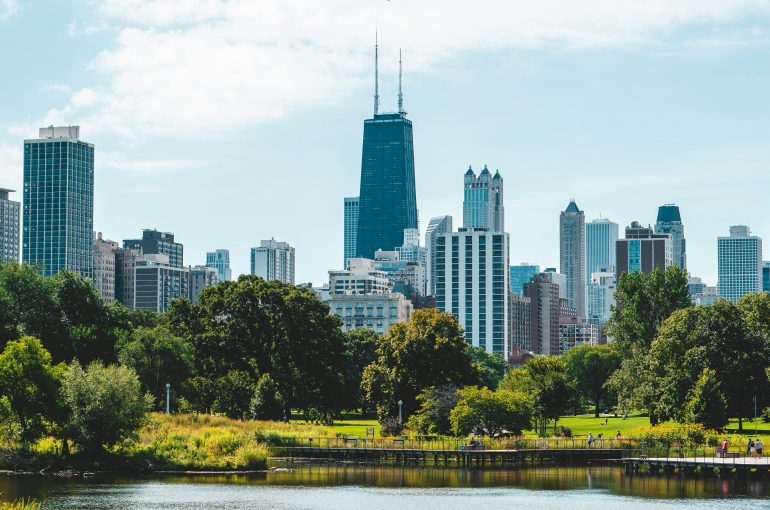THE DILEMMA BETWEEN ENVIROMENTAL CONSERVATION AND DEVELOPMENT FOR PUBLIC WELFARE BEFORE THE SUPREME COURT

Introduction
On May 30th, 2025, a Two Judges Bench of the Supreme Court comprising of Justice Surya Kant and Justice Kotiswar Singh decided the case titled “Municipal Corporation of Greater Mumbai & Ors. v. Pankaj Babulal Kotecha & Ors. SLP (C) No.29048/2018”. This case pertains to transformation of Khajuria Lake, a traditionally significant water body in Mumbai, into a public recreational park by the Municipal Corporation of Greater Mumbai (MCGM) initiated under a city-wide beautification directive
Factual Background
Khajuria Lake, a century-old water body located near the Subject Property in Mumbai, was known for cultural significance and biodiversity. In 2008, under a directive to develop Theme Gardens, the Municipal Corporation of Greater Mumbai (MCGM) selected this site—belonging to state government land through collector—for beautification. The lake’s degraded condition being cited as a justification, MCGM proceeded with the project by appointing a contractor, allocating a Rs.5 Crore budget, and initiating development work, even though formal permission from the Collector was still pending.
Although MCGM sought a No Objection Certificate from the Collector which remained pending, the project moved forward with the transformation, which was completed in 2011. A Public Interest Litigation was filed in 2012 challenging the project, emphasizing environmental destruction. Eventually, post facto approval was granted by the Collector in 2014. However, the High Court, in 2018, ruled in favour of restoring the lake, prompting MCGM to file an appeal. Subsequently the Supreme Court ordered status quo in November 2018, allowing the park to remain functional while the appeal was pending before it.
Contentions
The Senior Counsel for MCGM, strongly opposed the High Court’s classification of the Subject Property as a lake which needs to be restored, arguing it was officially designated as a Recreation Ground (R.G.) in the 1991 Development Plan through a lawful process that faced no objections. He emphasized that MCGM’s development was consistent with its statutory duty to enhance public recreational spaces and had transformed a neglected garbage dump into a valuable community asset. The area, long used for public events like Ganesh festivals, now includes green cover, a musical fountain, and recreational facilities, all serving the public without charge.
The counsel for the Respondent opposed the appeal by asserting that substantial documentary evidence, including MCGM’s own 2009 letter, confirmed the existence of a functional lake at the Subject Property. He argued that the beautification project led to irreversible ecological damage by destroying a century-old water body that supported aquatic life and bird habitats. He also criticized the 2014 post facto sanction as an unlawful attempt to validate an already completed, unauthorized project, pointing out its legal inconsistencies. He concluded that environmental principles and the Public Trust doctrine justified the High Court’s order to restore the lake.
Court’s Analysis
The High Court’s decision was primarily based on the public trust doctrine, holding that natural water bodies must be preserved at all costs and that the State cannot authorize their destruction. It deemed the 2014 post facto sanction invalid, as it attempted to retroactively legalize an unauthorized development that had already altered the land use. Invoking constitutional provisions, the Court concluded that environmental preservation is a constitutional duty that overrides development interests. However, the need for a balanced approach was emphasized, suggesting that while the High Court’s interpretation aligned with environmental principles, it must be reconsidered in light of practical realities. The public trust doctrine, though foundational, should be applied with sensitivity to contemporary conditions, acknowledging that both parks and ponds serve essential but different public and ecological roles. Sustainable development requires harmonizing environmental protection with evolving public needs.
The Court further discussed the unique situation of this case, where an abandoned and degraded water body, no longer functioning as a viable aquatic ecosystem, was transformed into a thriving public park. While historical records acknowledge the presence of a water body, there is no conclusive evidence of it being functional or ecologically significant at the time of development. In contrast, the current park offers substantial environmental and social benefits, including green cover, recreational amenities, and community engagement, making it a vital urban space that supports biodiversity and improves quality of life.
Restoring the lake now would not only destroy trees and green infrastructure but could also cause more environmental harm and waste public funds already invested. The post facto sanction of 2014, though criticized, includes safeguards ensuring the land remains for recreational use only. Moreover, the five-year delay in challenging the project undermines the case for restoration, as the community has come to rely on the park. Given these realities, reversing the development would be impractical and contrary to both ecological and public welfare objectives.
Conclusion
In evaluating the competing claims, the Court acknowledged the need to balance ecological imperatives with ground realities. Given the absence of clear evidence of a functioning water body at the time of development, the irreversible nature of the changes, and the park’s current role in serving the community, the Court found that restoration would likely cause more harm than benefit. Ultimately, the Court favoured a pragmatic approach that aligns with sustainable development goals and evolving public need priorities.
YASH HARI DIXIT
Legal Associate
The Indian Lawyer & Allied Services





































Leave a Reply